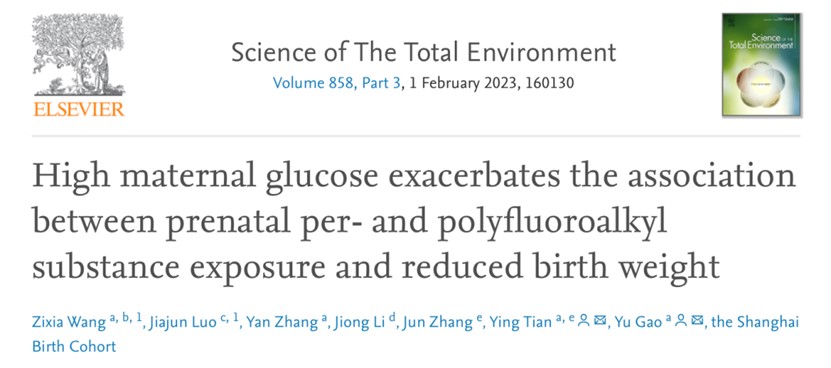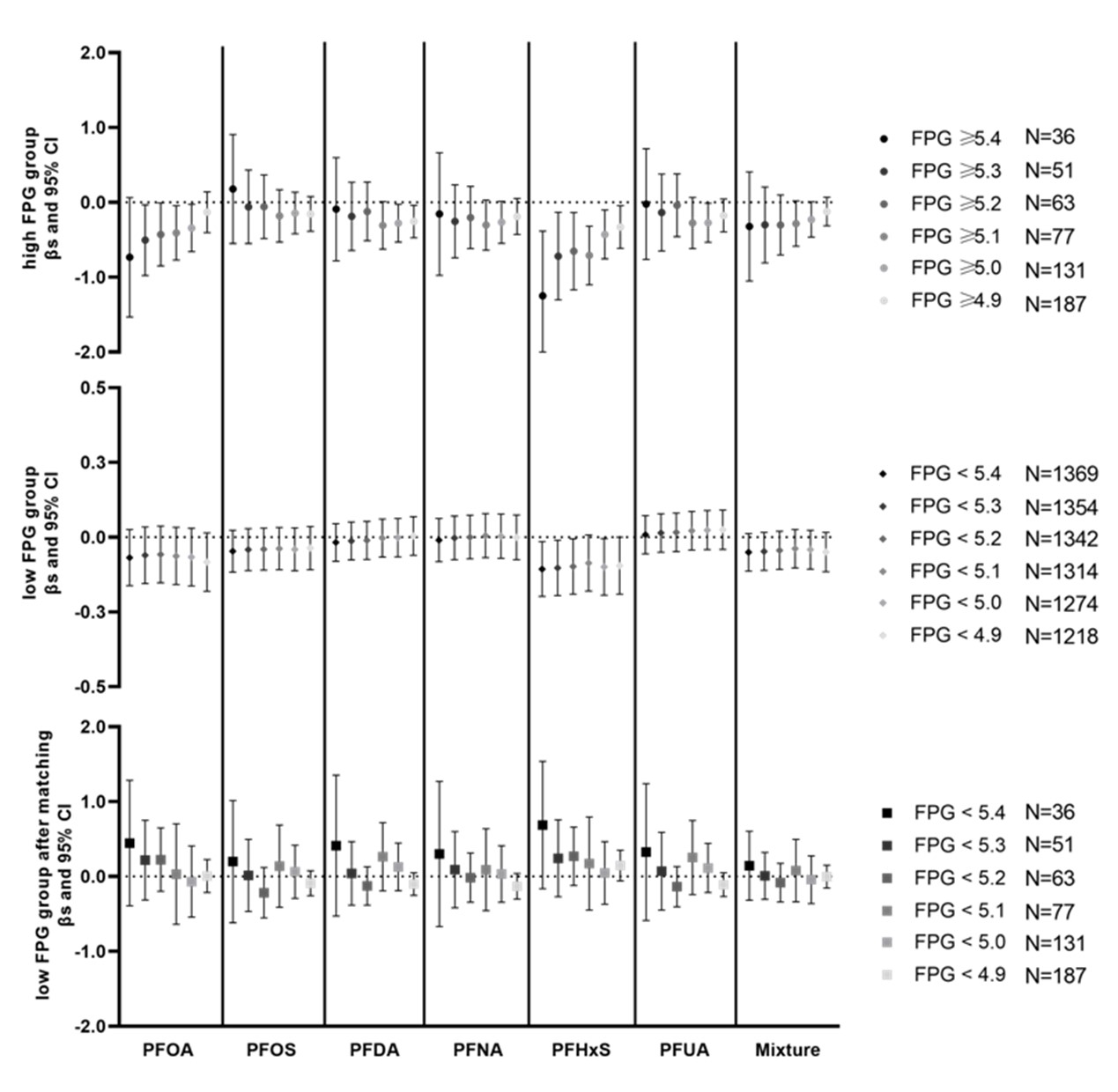Per- and polyfluoroalkyl substances (PFAS) are a class of synthetic persistent organic chemicals, which can accumulate in environmental media and organisms for a long time, and adversely affect human health. Notably, PFAS can transfer from mothers to fetuses across placenta, raising concerns over potential adverse developmental effects on offspring. Accumulating studies reported that prenatal exposure to PFAS was associated with reduced infant birth weight, however, several studies also found non-significant association. Also, increasing epidemiological evidence reported that PFAS exposure was associated with glucose homeostasis and impaired glucose tolerance. Pregnant women are sensitive to PFAS exposure, which may increase the risk of gestational diabetes mellitus (GDM). Moreover, hyperglycemic condition during pregnancy has been noted to alter the utero-placental blood flow, hormone production, and nutrient transfer capacity, which can increase transplacental transfer of PFAS and subsequently contribute to higher PFAS exposure to fetus. Thus, our research raised a hypothesis: High maternal glucose level may have interaction with high PFAS exposure, and fetus born to women in hyperglycemia condition may be susceptible to PFAS exposure.

On November 2022, Tian Ying and Gao Yu research group in Shanghai Jiao Tong University School of Public Health, published an article named “High maternal glucose exacerbates the association between prenatal per- and polyfluoroalkyl substance exposure and reduced birth weight” on Science of The Total Environment, which discussed the role of high maternal glucose in the effect of PFAS exposure on fetal growth and development.
This study was carried out based on Shanghai Birth cohort, 1405 mother-child pairs were included. Plasma concentrations of 8 PFAS were quantified in the first trimester. Fasting plasma glucose (FPG) at 24-28gestation weeks, birth weight and gestational age was collected through medical records. The z-score of birth weight was calculated by using the standardized formula. A range of FPG cutoffs (4.9-5.4mmol/L) covering current recommendations for gestational diabetes mellitus were used to define high and low FPG groups. Association between PFAS concentration and birth weight z-score was evaluated using multivariate linear regression in two FPG groups respectively, and the dose-response relationship was estimated with cutoffs ranging from low to high. Propensity score matching (PSM) method was used to counterbalance the effects of different PFAS concentrations between the high and low FPG groups, and run the regression again.
A doubling increase in concentrations of PFAS was inversely associated with birth weight z-score. The association was more evident in high FPG groups and the magnitudes intensified when FPG cutoff increased. The strongest association was observed for PFOA. With the increase of FPG cutoff value, the association effect was increased, but no significant effect was observed in low FPG groups after propensity score matching.

Fig.1β-coefficients and 95 % CIs for birth weight z-score in each FPG cutoffs according to per doubling increase in prenatal single PFAS concentration (ng/mL) and per quartile increase for PFAS mixture in linear regression models in Shanghai Birth Cohort. The N's in the bottom panel for the participants in low FPG group after matching were equal to the number in high FPG group.
This study highlighted the interaction between prenatal PFAS exposure and glucose level on fetal growth, and suggested that fetus born to women in hyperglycemia condition may be susceptible to PFAS exposure. Very few previous studies on the association of prenatal PFAS exposure and fetal growth took maternal glucose condition into account. To our knowledge, it is the first prospective study to investigate the interactive effects between prenatal PFAS exposure and maternal blood glucose on fetal growth. This study additionally applied PSM method by counterbalancing the different PFAS concentration between high and low FPG groups, and similar results were found, which increased the interpretability and generalizability of our results. It worth noting that we found the inverse association between PFAS and birth weight z-score in high FPG groups, even the stratified FPG levels do not meet the clinical threshold for GDM (5.1 mmol/L) in China. Exploring the effects with different FPG cutoffs may contributed to providing intervention strategies for pregnant women with high PFAS exposure.
Zixia Wang, graduate student of class 2019, School of Public Health, Shanghai Jiao Tong University, and Jiajun Luo, postdoctoral fellow at Institute for Population and Precision Health, the University of Chicago, are the co-first authors of this paper, Professor Yu Gao and Professor Ying Tian are the corresponding authors of this paper. This study was funded by the National Natural Science Foundation of China and Science and Technology Commission of Shanghai Municipality, etc.
Part of the content is reprinted from the wechat account of Environmental and Occupational Medicine.




